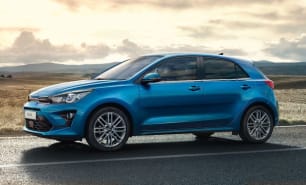There are elements of the A1’s cabin design that are tremendous. And other bits that are not so tremendous.
The bad bits include the fact you’re paying about $50,000 on the road for a car that has hard plastic just about everywhere the eye can see.
The good bits are that the textured plastics on the dash are beautiful, and so are the designed elements on the doors. I love the door handles, I love the metallic finish, I love the layout and I love the way it makes you forget that you’re in a luxury-branded car with hard plastic all around you.
The media screen and digital dashboard help, too - it feels technical and premium in the driver’s seat as a result. The graphics are crisp and clear, the menus are mostly easy to navigate, but I had some issues getting Apple CarPlay to work. It has wireless CarPlay, and I had it plugged in, so perhaps that was confusing things.
But the Audi media system also includes Audi Connect in this spec, meaning there are realtime map, traffic and hazard updates, plus a Wi-Fi hotspot, fuel prices, parking, weather and Google maps and services. It’s high-tech, and if that’s what you like, this is definitely going to please you more than a Mini Cooper.
Practicality is good, with bottle holders in all four doors, cup holders between the front seats and a covered centre console and wireless charging bay in front of the shifter. In the back, storage is sparse: aside from the door pockets, there’s nothing - no cup holders, no map pockets.
There is enough space for four adults in the A1, so if you plan to take your mates to brunch or if you’ve got young kids, you should be comfortable enough in here.
I had the driver’s seat set for my own height (182cm) and I was able to slide in to the rear seat without much fuss at all, with adequate knee and toe room, and decent headroom too. Try and fit three across the back and it’ll be uncomfortable, unless those three are very slim.
There are dual ISOFIX child-seat anchor points and three top-tether points, and the seat structure is pretty flat, making fitment of these types of seats simple enough.
The boot capacity is good for a car of this size at 335 litres, which is a solid 20 per cent bigger than before. You won’t find a spare under the boot floor, though, as all A1s have an inflator kit. The back seats fold down to allow 1090L of cargo capacity, but there’s a ledge you have to contend with if you’re trying to load larger items in. Maybe skip the IKEA trips in this one, then.

